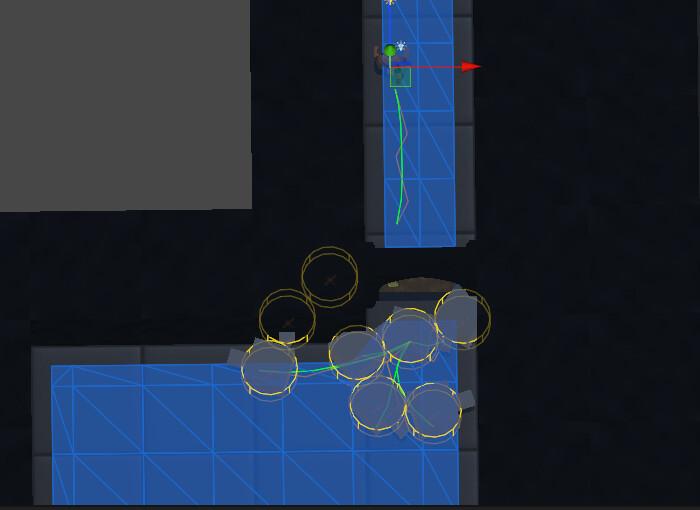Hello,
First let me say that I’m long-time Unity Developer and I recently got the A* Pathfinding project and I love it. So good! This package is been a breeze to set up and get working.
For context: I am building a game in Unity 2023.2.4f1 and using A* Pathfinding Project from Unity Asset store v5.1.2. I am using an AStarPath Graph component to identify boxes that can be traversed by RVOController agents. I have a single RVO Simulator for the RVOControllers, and the RVOController scripts are attached to the “entities” in the game. Ive figured out how to scan the graph for pathfinding, and the agents pathfind just great - that all is working as I would expect it.
One of the things Im noticing is that when I have several RVOControllers bunching up around say a doorway or so, sometimes the agents will “push through” the blocked areas. I’m using the AStarPath component to Update the grid graph to make the intersection between a door and a room impassible on the graph (the boxes between the room and the corridor show grey, not blue, which I assume means they are “impassable”), and in general a single RVOController will respect the boundary. With several RVOControllers, sometimes they “push through” and an agent or two gets through the door, which is obviously something I want to fix.
I saw a very old thread on something similar, here:
I guess my question is - how do I get the RVOControllers to respect the non-traversable areas of the GridGraph? I’ve tried DynamicObstacles, that doesn’t seem to matter. I’ve changed the agent radius up and down and that seems to help a little but doesn’t seem to eliminate the issue.
Do I need to change the GridGraph to a NavMesh? When I try to add a RVONavmesh component, it says its deprecated and that the RVOSimulator allows you to modify the Navmesh properties - but since Im using a GridGraph, Im not sure Im using a NavMesh? I do have “use navmesh as an obstacle” checked on my RVOSimulator, but again - not sure if thats used given Im not even sure there’s a navmesh in the scene given Im using a GridGraph on the AStarPath component in the scene.
Any advice/insight on the proper way to get RVOControllers to respect the traversable areas of the GridGraph and/or if I should use something else with an RVOController (not the AstarPath GridGraph) would be most appreciated!
